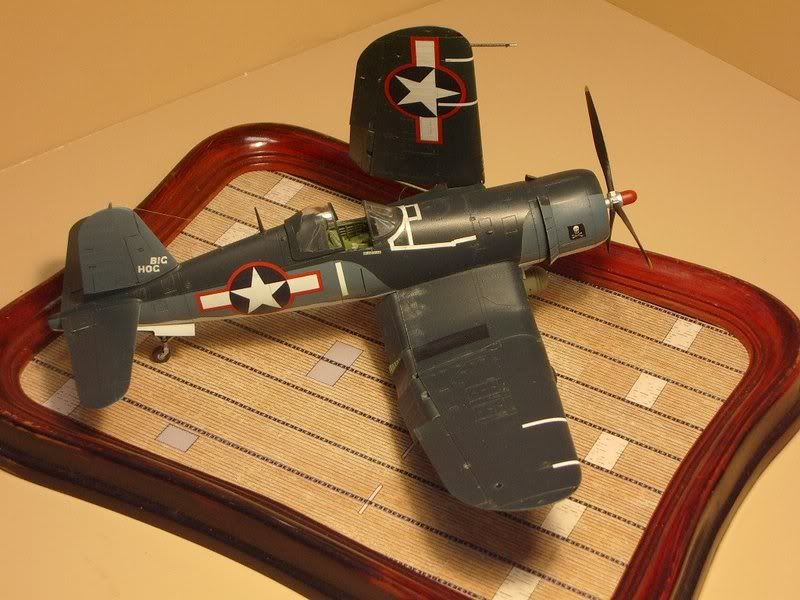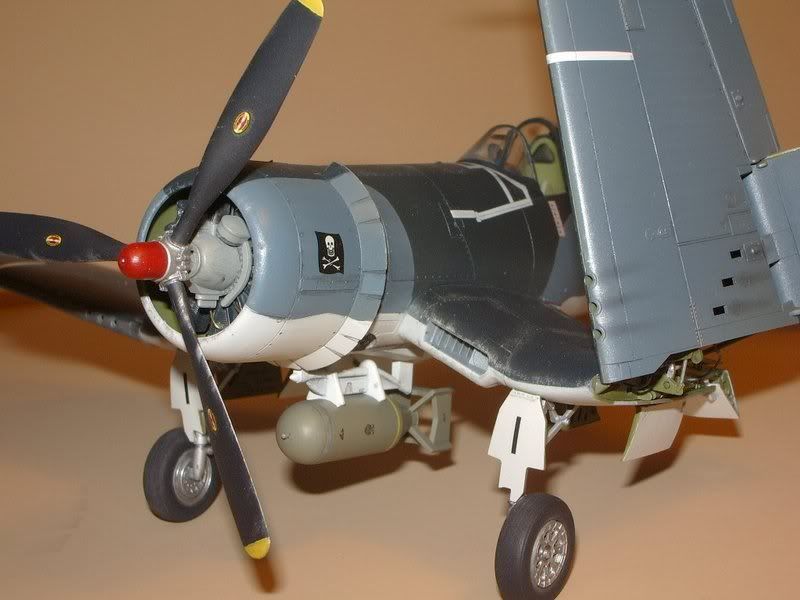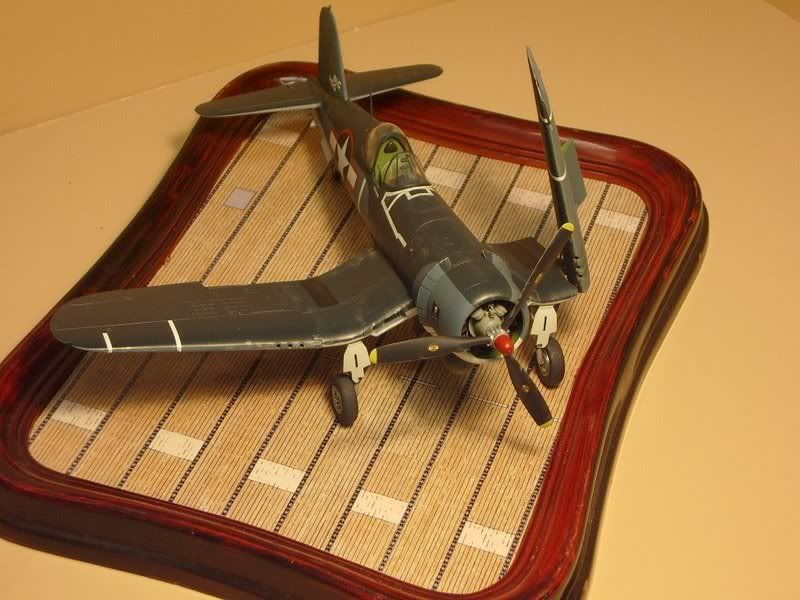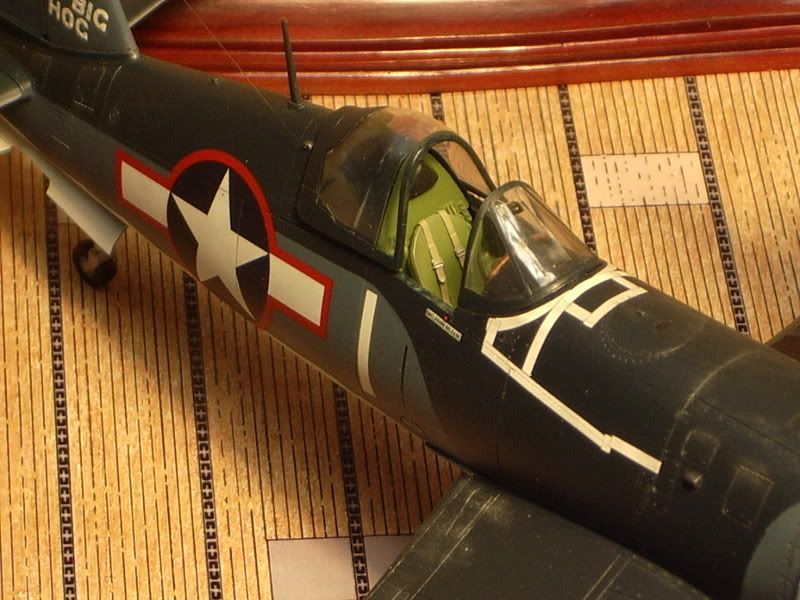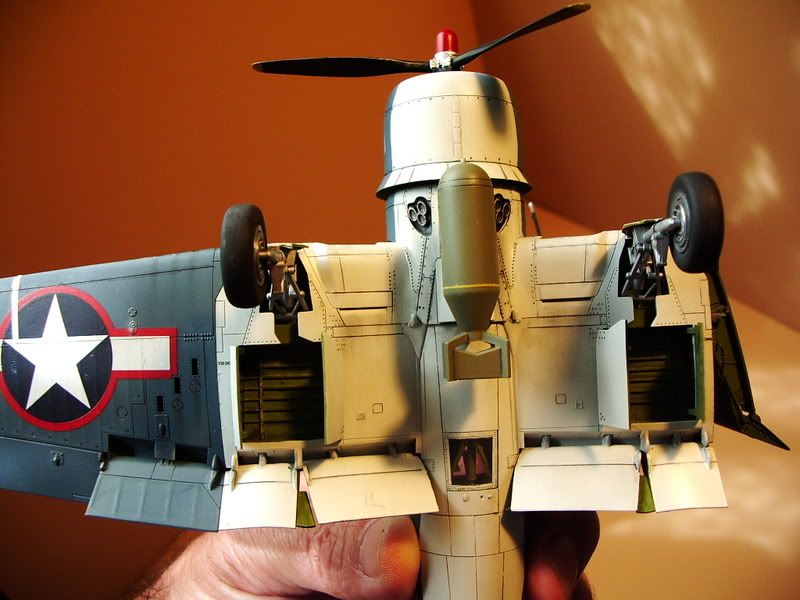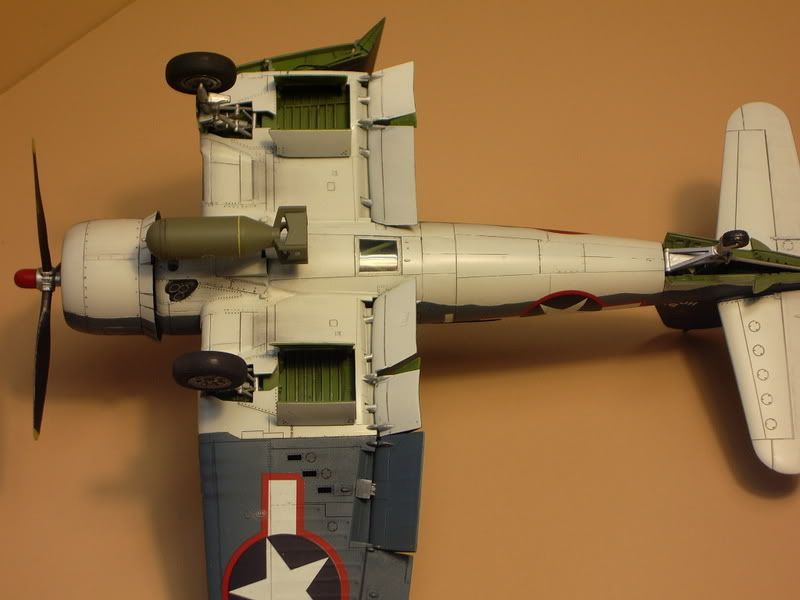Yes the big P & W radial engine did leak oil.
And it didnt take long. Ive seen photos of factory acceptance flights that have obvious oil streaming along the bottom. One flight, thats about it. We used to have a saying:
“If aint leaking oil - you better service it!”
Was this the early tri colored land based Marine version? What flight group used that Pirate flag?
The “tricolor” scheme was only used for a short time, in 1943, AFAIR. The red surround on the star lasted even less, from July-Oct in 1943, give or take - about 90 days.
The skull and crossbones was the official insignia of the “Jolly Rogers”:
The “Jolly Rogers” have been an almost constant presence in the United States Navy since January 1, 1943. Their distinctive skull-&-crossbones design have adorned a variety of aircraft from F4U Corsairs through to today’s fleet defender, the F-14 Tomcat.
Though the “Jolly Rogers” name has been passed down through a number of squadrons over the years, their identity has remained strong. From their origins in World War II with the F4U Corsair, the “Jolly Rogers” have progressed through a number of aircraft over the years and two squadrons in WWII, Fighting VF-17 the original Jolly Rogers, and Fighting VF-84.
Fighting 84
During 1944, there were actually two “Jolly Roger” squadrons in the US Navy. While VF-17 remained as the official “Jolly Rogers,” another squadron with the same name entered the Pacific theatre as well. Created by former VF-17 members who were transferred to this new squadron after their first tour, Fighting 84 was officially named “The Wolf Gang.” However, because so many members of Fighting 84 were ex-Fighting 17 members, the group came to see themselves as true “Jolly Rogers.” Indeed, there was an official attempt made to secure the “Jolly Rogers” name, given that the original VF-17 had been disbanded by that time. However, the Navy had re-commissioned VF-17 shortly before the attempt, and so the request was denied.
The Royal Navy Fleet Air Arm (FAA) also flew F4U’s, calling them Corsairs I-V. The F4U-1A was the Corsair II, with the earliest Corsair I’s being the F4U-1 “Birdcage.” There was some overlap of these two, as well. Nearly all of the delivered FAA Corsairs, except for 95 of the orginal batch, had square clipped wing tips, a little mentioned fact.
Truth is, the USN didnt like the F4U as a carrier aircraft, claiming the lack of pilot forward vision as the prime reason. It was the British who first accepted them and got the production underway. The Marines followed and eventually the Navy jumped on this excellent bird.
